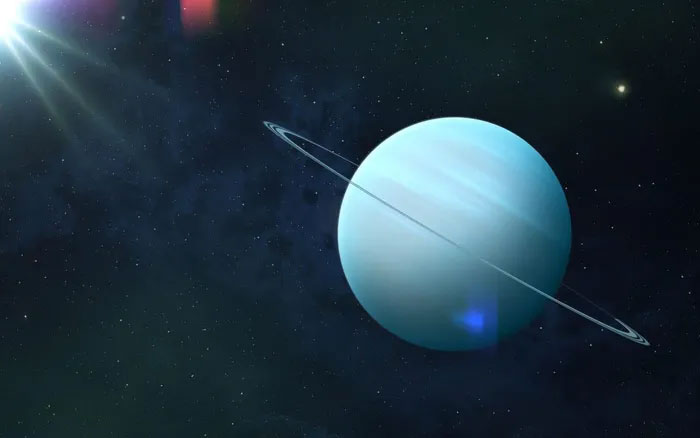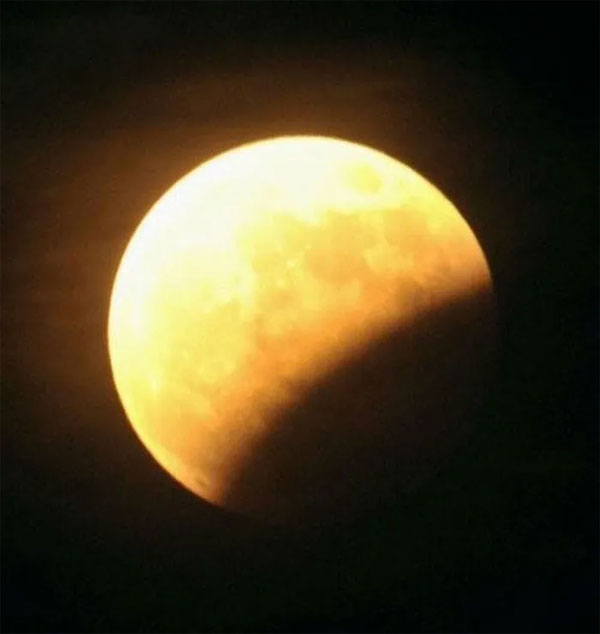Amazing 6 astronomical phenomena explode in the sky in November
Entering November, people will have the opportunity to admire the beautiful scenes of the sky when 6 interesting astronomical phenomena occur.
The first interesting astronomical phenomenon that occurs in November is the new moon or super moon . According to experts, this phenomenon refers to the time when the full moon or new moon occurs when our satellite is closest to the planet.
November 4 is the new moon day. On this day, people will have the opportunity to see the sky very clearly because the light from the moon does not obstruct the view.

Today, Uranus enters a retrograde state.
The next amazing astronomical phenomenon that also takes place on November 4 is Uranus entering a retrograde state . At that time, this planet will be closest to Earth and brightest. On this day, people can clearly see Uranus without being obstructed by the light of the Moon.
According to the American Meteor Society (AMS), the Taurids meteor shower in the southern hemisphere will be active for more than two months, from September 28 to December 2. In particular, the peak state of this phenomenon falls on the night of November 4-5.
Meanwhile, in the northern hemisphere, the Taurids meteor shower will take place on 11-12 November . However, people watching this event may encounter some obstacles due to the light of the moon on that 2 evenings.
On November 17-18, the public will have the opportunity to watch the Leonids meteor shower. This is a medium-sized meteor shower, with a rate of 15 meteors per hour at its peak. This phenomenon is quite rare because meteor vortex occurs every 33 years.

Also this month, people around the world will see a partial lunar eclipse.
On November 19, those who love to watch the sky will have the opportunity to observe a partial lunar eclipse . People in many countries around the world can easily watch this event.
The last gravitational astronomical phenomenon to occur in November was the Full Moon . This phenomenon can be observed on November 20. At that time, the Moon and the Sun were on opposite sides of the Earth. This causes the earth-facing hemisphere of the moon to be fully illuminated by the sun.
- 18 outstanding astronomical phenomena in 2014
- 2 amazing astronomical phenomena appeared in the week
- Amazing astronomical phenomena should not be missed in March 2017
- See the amazing astronomical phenomena of 2013
- 6 interesting astronomical phenomena are about to appear in Vietnam
- See Venus meet Jupiter at dawn
- 12 amazing astronomical phenomena cannot be missed in 2016
- Virtual astronomical phenomena in April
- The image of 'sounding' meditates in space
- Jupiter and Sao Kim 'reunion' in the sky today November 13, 2017
- Mercury passes through the Sun - a rare astronomical phenomenon is about to take place
- Details of observable astronomical events from Vietnam in 2018
 Van Allen's belt and evidence that the Apollo 11 mission to the Moon was myth
Van Allen's belt and evidence that the Apollo 11 mission to the Moon was myth The levels of civilization in the universe (Kardashev scale)
The levels of civilization in the universe (Kardashev scale) Today Mars, the sun and the Earth are aligned
Today Mars, the sun and the Earth are aligned The Amazon owner announced a secret plan to build a space base for thousands of people
The Amazon owner announced a secret plan to build a space base for thousands of people This Abundant Mineral on the Moon Could Power Humanity for Thousands of Years
This Abundant Mineral on the Moon Could Power Humanity for Thousands of Years  The Strange Disease That Affects Everyone Who Has Ever Set Foot on the Moon
The Strange Disease That Affects Everyone Who Has Ever Set Foot on the Moon  What would a day on the Moon be like for astronauts?
What would a day on the Moon be like for astronauts?  First photo of Mars' strangely shaped moon
First photo of Mars' strangely shaped moon  The biggest supermoon of the year is about to light up the world's skies
The biggest supermoon of the year is about to light up the world's skies  New research shows that Earth has a new 'Moon'
New research shows that Earth has a new 'Moon' 